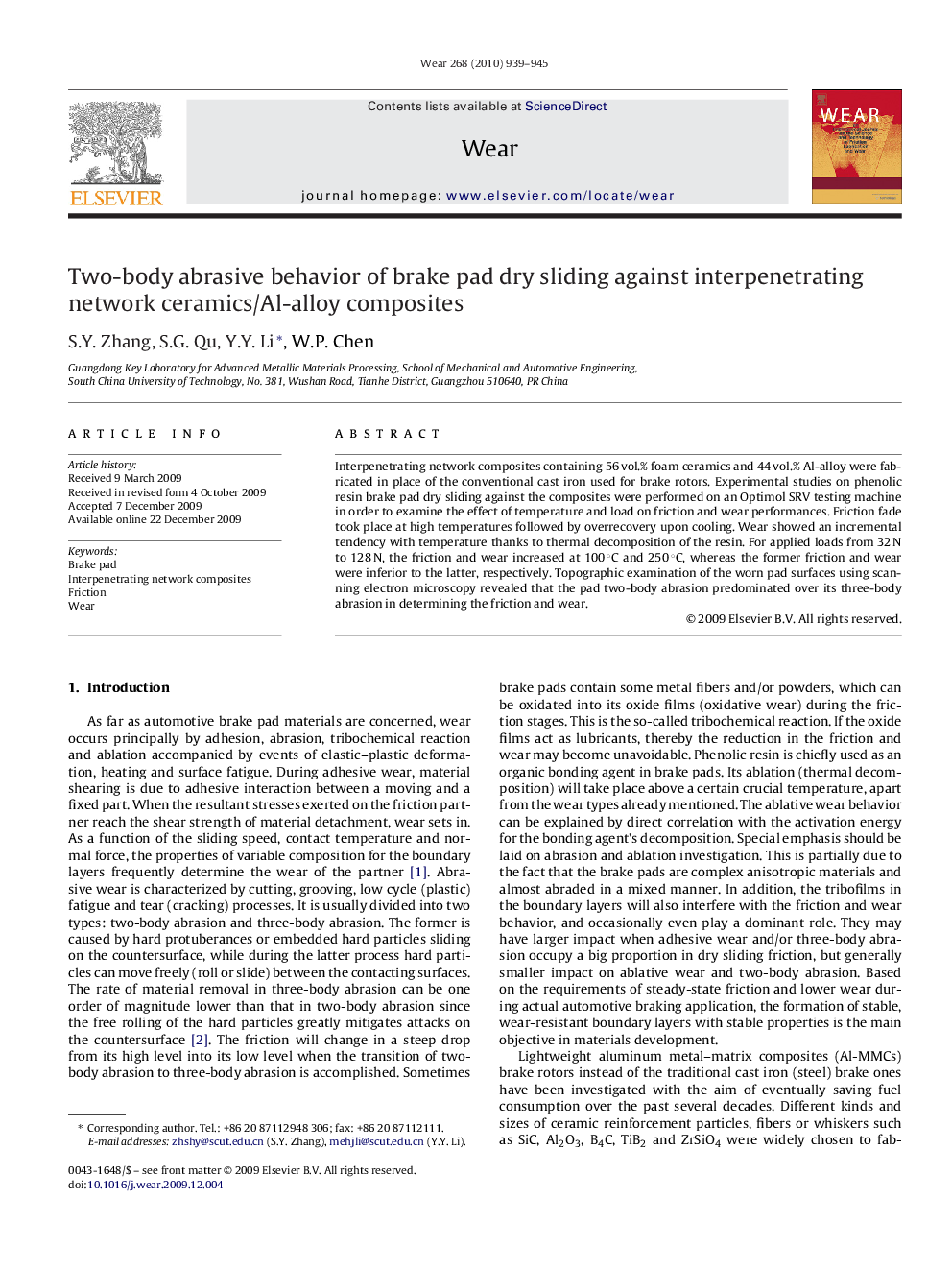| Article ID | Journal | Published Year | Pages | File Type |
|---|---|---|---|---|
| 618411 | Wear | 2010 | 7 Pages |
Abstract
Interpenetrating network composites containing 56 vol.% foam ceramics and 44 vol.% Al-alloy were fabricated in place of the conventional cast iron used for brake rotors. Experimental studies on phenolic resin brake pad dry sliding against the composites were performed on an Optimol SRV testing machine in order to examine the effect of temperature and load on friction and wear performances. Friction fade took place at high temperatures followed by overrecovery upon cooling. Wear showed an incremental tendency with temperature thanks to thermal decomposition of the resin. For applied loads from 32 N to 128 N, the friction and wear increased at 100 °C and 250 °C, whereas the former friction and wear were inferior to the latter, respectively. Topographic examination of the worn pad surfaces using scanning electron microscopy revealed that the pad two-body abrasion predominated over its three-body abrasion in determining the friction and wear.
Related Topics
Physical Sciences and Engineering
Chemical Engineering
Colloid and Surface Chemistry
Authors
S.Y. Zhang, S.G. Qu, Y.Y. Li, W.P. Chen,
